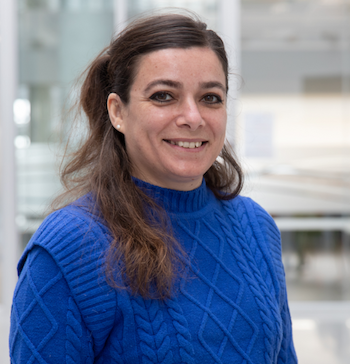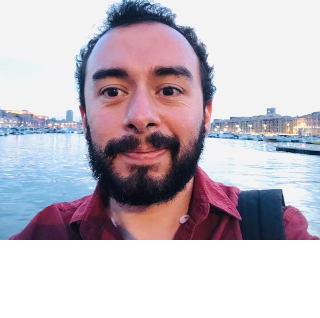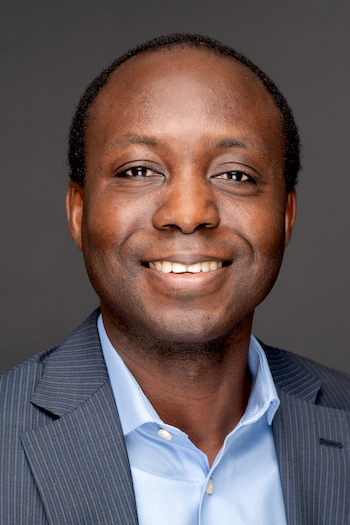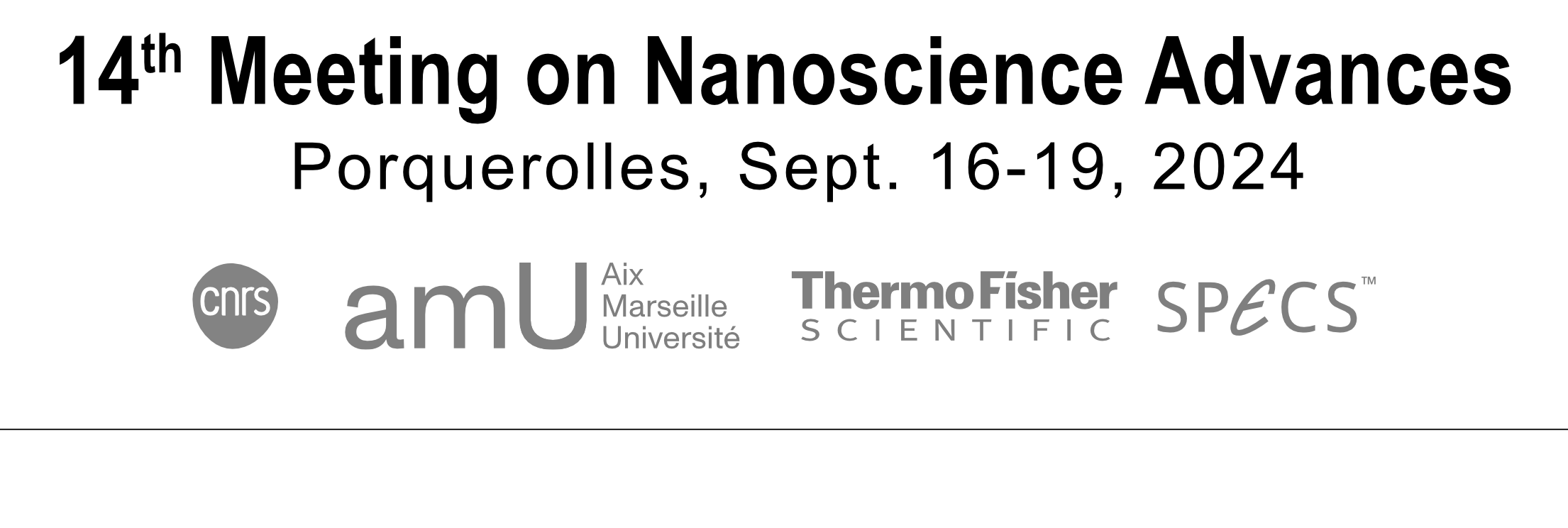9:15 - 9:45
Ferry crossing → Porquerolles
9:45 - 10:00
Arrival at IGESA Center→ Luggage drop off in the locker room
11:00 - 11:10
Opening of the meeting
Nicolas Bonod and Lionel Santinacci
Aix-Marseille Univ. - CNRS | AMUtech - CNano
11:10 - 11:40
Operando investigation of nanocrystal electronic structure to assist infrared device design
Emmanuel Lhuillier
Sorbonne Université, CNRS, INSP, Paris, France
11:40 - 12:00
Sum-rules methods for Spectral Response Functions
Brian Stout
Aix-Marseille Univ., CNRS, Centrale Marseille, Institut Fresnel, Marseille, France
12:10 - 13:30
Lunch (IGESA restaurant)
13:30 - 16:00
Time for discussion
16:00 - 16:30
Improved TIRF imaging through resonant dielectric multilayer optimization
Aude Lereu
Aix-Marseille Univ., CNRS, Centrale Marseille, Institut Fresnel, Marseille, France
16:30 - 16:50
Skyrmion Generation in a Plasmonic Nanoantenna through the Inverse Faraday Effect
Mathieu Mivelle
Sorbonne Université, CNRS, Institut des NanoSciences de Paris, INSP, Paris, France
16:50 - 17:20
Plasmonic photochemistry: targeted heating with metal nanoparticles
Andrea Baldi
Vrije Universiteit Amsterdam, The Netherlands
17:20 - 17:50
Coffee break (Terrasse)
17:50 - 18:20
What is the best strategy for light-trapping in ultrathin solar cells?
Stéphane Collin
CNRS- Université Paris-Saclay | C2N, Palaiseau, France
18:20 - 18:50
Multilayer graphenes: lot of details obtained with standard Raman microscopy
Cédric Pardanaud
Aix-Marseille Univ. - CNRS | AMUtech, PIIM, Marseille, France
18:50 - 19:10
Flash presentations
Posters
19:30 - 20:30
Dinner (IGESA restaurant)
21:00 - 22:30
Poster session (Salle Cheminée)
9:00 - 9:40
Metal Organic Frameworks: Water-related Applications
Patricia Horcajada
IMDEA ENERGY | Advanced Porous Materials Unit, Spain

Dr. Patricia Horcajada, head of the Porous Materials Unit at IMDEA Energy, has been recognized at the University of Alcalá’s “Doctor of Alcalá” 2023 Research Excellence Awards in the category of Young Researcher in Experimental Sciences.
The award considers the excellence of the scientific contributions, the impact of the same, the leadership capacity, as well as the balance and quality of the research career.Horcajada has a multidisciplinary scientific background. With a degree in Pharmacy (2001) and a PhD in Materials Science (2005) from the Complutense University of Madrid, in 2005 she joined the Institut Lavoisier (France), first as a postdoctoral researcher and then as a CNRS researcher in 2007.
Since 2016, Patricia is Senior Researcher and Head of the Advanced Porous Materials Unit at IMDEA Energia. Her research activity focuses on the development of new multifunctional materials and their application in areas such as energy, environment or health.
She has been awarded several recognitions, such as the Young Female Talent RAC 2022, Young Researchers Leading Groups RSEQ 2020, Leonardo award 2017 or the Research Award of the Community of Madrid Miguel Catalán 2016. In addition, she is among the top 2% of researchers in the world according to the ranking prepared by Stanford University.
9:40 - 10:00
Protein nano-dot arrays for cell biology
Zakaria Marmri
Aix-Marseille Univ., CNRS, CINaM, Marseille, France
10:00 - 10:20
Global optimization for inverse design in nanophotonics
Pauline Bennet
Université Clermont Auvergne, CNRS, Institut Pascal, France
10:20 - 10:50
Coffee break (Terrasse)
10:50 - 11:20
Controlling Light Absorption at the Nanoscale: An (Electro-)Chemical Approach
Gilles Bourret
Paris Lodron University, Salzburg, Austria
11:20 - 11:40
Tailored functional nanoparticles by polymerization induced by surface plasmons
Olivier Soppera
Université de Haute-Alsace, CNRS, IS2M, Mulhouse, France
11:40 - 12:00
Phase Singularities in Resonant Metasurfaces
Rémi Colom
Université Côte d'Azur - CNRS | CRHEA, Sophia-Antipolis, France
12:10 - 13:30
Lunch (IGESA restaurant)
13:30 - 16:00
Time for discussion
16:00 - 16:30
Achromatic metasurfaces: fundamental limits and some solutions
Samira Khadir
Université Côte d'Azur - CNRS | CRHEA, Sophia-Antipolis, France
16:30 - 16:50
How forces exerted by external fields on adatoms lead to the collective motion of 2D nanostructures
Pierre Müller
Aix-Marseille Univ. - CNRS, AMUtech, CINaM, Marseille, France
16:50 - 17:20
Probing the shape and crystallinity of nano-objects with vibrational spectroscopies
Lucien Saviot
CNRS-Université Bourgogne Franche-Comté | LICB, Dijon, France
17:20 - 17:50
Coffee break (Terrasse)


17:50 - 18:10
Molecular dynamics and electronic structure simulations of photoexcited
chromophores in the context of molecular heaters
Mariana Telles do Casal
Aix-Marseille Univ. - CNRS, ICR, Marseille, France
CNano PhD Thesis Award Winner


18:10 - 18:30
Nonlinear Transport in Topological Materials and Heterostrcutures
Diego Garcia-Ovalle
Aix-Marseille Univ. - CNRS, CINaM, Marseille, France
CNano PhD Thesis Award Winner


18:30 - 18:50
Strategies for quasi-2D perovskite integration in p-i-n solar cells
Anna Capitaine
Aix-Marseille Univ. - CNRS, CINaM, Marseille, France
French Chemical Society, Nanoscience Division Thesis Award Winner
19:30 - 20:30
Dinner (IGESA restaurant)
9:00 - 9:40
Scalable classical and quantum semiconductor light sources
Boubacar Kante
University of California Berkeley, Dpt. EECS, Berkeley, USA

Boubacar Kante is the inaugural Chenming Hu endowed Chaired Professor at UC Berkeley. His multidisciplinary research interests are in the areas of wave-matter interaction from microwave to optics and related fields such as antennas, nanophotonics, novel materials, and quantum optics.
Boubacar Kanté is best known for his invention of scale-invariant lasers named Berkeley Surface Emitting Lasers (BerkSELs) that overcome a six-decade long challenge in wave-physics on how to increase the size of a lasing cavity while maintaining it single mode. He proposed and demonstrated the world first topological laser based on the quantum Hall effect for light, a demonstration selected as one of the top 10 discoveries by Physics World in 2017. He demonstrated the world first bound state in continuum (BIC) laser, where he highlighted the unique scaling of BIC cavities for enabling compact and efficient light sources. He also demonstrated the first single-mode valley-Hall topological laser. His group hold the world record for plasmonic nanosensing (immuno-assay nanosensing) using a scheme he proposed for the implementation of singularities of open systems known as exceptional points. He also holds the world record for the bandwidth and efficiency of planar structured lenses, a structure he named “the Fishnet-Achromatic-Metalens (FAM)”.
Prof. Kanté demonstrated the first non-magnetic metamaterial invisibility cloak. He introduced the notion of symmetry/parity of ring resonators, an idea used to prove that closed rings, previously believed incapable of producing artificial magnetism, can make ultra-broadband negative index in metamaterials.
Boubacar Kanté won the 2024 Bakar prize, he is a 2021 Bakar Fellow and a 2020 Moore Inventor Fellow. He is a senior member of IEEE and Optica (formerly OSA). He received the 2017 Office of Naval Research (ONR) Young Investigator Award, the 2016 National Science Foundation (NSF) Career Award, The best undergraduate teacher award from UC San Diego Jacob School of Engineering in 2017, the 2015 Hellman Fellowship, the Richelieu Prize in Sciences from the Chancellery of Paris Universities for the best Ph.D in France in Engineering, Material Science, Physics, Chemistry, Technology in 2010, the Young Scientist Award from the International Union of Radio Science (URSI) in Chicago in 2007, the Fellowship for excellence from the French Ministry of Foreign Affairs in 2003 for his undergraduate studies, a Research Fellowship from the French Research Ministry for his Ph.D studies.
9:40 - 10:00
New molecular diodes for rectenna applications
Hugo Bidotti
Aix-Marseille Univ. - CNRS, ICR-IM2NP-CINaM, Marseille, France
10:00 - 10:20
Detecting gold and polystyrene nanoparticles under UV microscope
Xinyu Fang
Aix Marseille Univ, CNRS, Centrale Med, Institut Fresnel, AMUTech, MArseille, France
10:20 - 10:50
Coffee break (Terrasse)
10:50 - 11:20
Simulations and conception of innovative cooling nanodevices based on III-V heterostructures
Marc Bescond
CNRS - Aix-Marseille Univ. | AMUtech, IM2NP, Marseille, France
11:20 - 11:40
How to tackle the most sophisticated material science questions with advanced TEM: towards reliable investigations of materials
Salomé Larmier
Thermo Fisher Scientific, Materials & Structural Analysis, Eindhoven, The Netherlands
11:40 - 12:00
Self-assembled monolayer of push-pull chromophores towards the polarization modulation for controlled detection of biomolecules
Lionel Patrone
Aix Marseille Univ, Université de Toulon, CNRS, ISEN Méditerranée, IM2NP UMR 7334, 83000 Toulon, France
12:10 - 13:30
Lunch (IGESA restaurant)
13:30 - 16:00
Time for discussion
16:00 - 16:30
Surfactant free emulsions as template for the elaboration of nanocapsules: formulation and applications
Fabienne Gauffre
CNRS - University of Rennes | ISCR, Rennes, France
16:30 - 16:50
Hollow Gold Nanoshells for Sensitive 2D Plasmonic Sensors
Souhir Boujday
Sorbonne Université, CNRS, LRS, Paris, France
16:50 - 17:20
SALD is in the air: impact on open-air Spatial Atomic Layer Deposition on thin film processing and materials properties
David Muñoz-Rojas
CNRS - University of Rennes | ISCR, Rennes, France
17:20 - 17:50
Coffee break (Terrasse)
17:50 - 18:20
From trajectories to models: data-driven approaches to decipher the dynamics of living systems
Pierre Ronceray
Aix Marseille Université, CNRS, CINAM, Turing Center for Living Systems, Marseille, France
18:20 - 18:40
Hybrid Gold-DNA Origami Nanostructures for the Enhancement and Sensing of Single Molecules
Sébastien Bidault
Institut Langevin, ESPCI Paris, Université PSL, CNRS, Paris, France
18:40 - 19:00
Characterization of optical systems with the singularity expansion method
Isem Ben Soltane
Aix Marseille Univ, CNRS, Centrale Med, Institut Fresnel, Marseille, France
19:30 - 20:30
Dinner (IGESA restaurant)
9:00 - 9:30
Engineering lossy photonic resonances in non-Hermitian photonics to enhance light-matter interaction
Hai Son Nguyen
Ecole Centrale de Lyon - CNRS | INL, Lyon, France
9:30 - 9:50
Anti-COVID multi-therapy by Immune/Chemo-active nanoMOFs
Tania Hidalgo
IMDEA ENERGY | Advanced Porous Materials Unit, Spain
9:50 - 10:10
Polyoxometalate-Stabilized Gold Nanostars for combined chemo/photothermal cancer therapy
Anne Vallée
Sorbonne Université, CNRS, LRS, Paris, France
10:10 - 10:40
Coffee break (Terrasse)
10:40 - 11:10
Nanoscale chemistry: synthesis of Prussian blue nanoparticles and their analogues for innovative applications
Yannick Guari
CNRS - University of Montpellier | ICGM, Montpellier, France
11:00 - 11:20
Programming Silicon waveguides complex transmittance with Phase Change Materials
Benoit Cluzel
Université de Bourgogne, Laboratoire Interdisciplinaire Carnot de Bourgogne, Dijon, France
11:20 - 11:40
Theory and simulation of spatially dispersive highly-doped semiconductors
Denis Langevin
Université Clermont Auvergne, CNRS, Institut Pascal, Clermont-Ferrand, France
11:40 - 12:00
Award session
Meeting closing
13:45
Ferry crossing → Mainland

 Dr. Patricia Horcajada, head of the Porous Materials Unit at IMDEA Energy, has been recognized at the University of Alcalá’s “Doctor of Alcalá” 2023 Research Excellence Awards in the category of Young Researcher in Experimental Sciences.
The award considers the excellence of the scientific contributions, the impact of the same, the leadership capacity, as well as the balance and quality of the research career.Horcajada has a multidisciplinary scientific background. With a degree in Pharmacy (2001) and a PhD in Materials Science (2005) from the Complutense University of Madrid, in 2005 she joined the Institut Lavoisier (France), first as a postdoctoral researcher and then as a CNRS researcher in 2007.
Dr. Patricia Horcajada, head of the Porous Materials Unit at IMDEA Energy, has been recognized at the University of Alcalá’s “Doctor of Alcalá” 2023 Research Excellence Awards in the category of Young Researcher in Experimental Sciences.
The award considers the excellence of the scientific contributions, the impact of the same, the leadership capacity, as well as the balance and quality of the research career.Horcajada has a multidisciplinary scientific background. With a degree in Pharmacy (2001) and a PhD in Materials Science (2005) from the Complutense University of Madrid, in 2005 she joined the Institut Lavoisier (France), first as a postdoctoral researcher and then as a CNRS researcher in 2007.





 Boubacar Kante is the inaugural Chenming Hu endowed Chaired Professor at UC Berkeley. His multidisciplinary research interests are in the areas of wave-matter interaction from microwave to optics and related fields such as antennas, nanophotonics, novel materials, and quantum optics.
Boubacar Kanté is best known for his invention of scale-invariant lasers named Berkeley Surface Emitting Lasers (BerkSELs) that overcome a six-decade long challenge in wave-physics on how to increase the size of a lasing cavity while maintaining it single mode. He proposed and demonstrated the world first topological laser based on the quantum Hall effect for light, a demonstration selected as one of the top 10 discoveries by Physics World in 2017. He demonstrated the world first bound state in continuum (BIC) laser, where he highlighted the unique scaling of BIC cavities for enabling compact and efficient light sources. He also demonstrated the first single-mode valley-Hall topological laser. His group hold the world record for plasmonic nanosensing (immuno-assay nanosensing) using a scheme he proposed for the implementation of singularities of open systems known as exceptional points. He also holds the world record for the bandwidth and efficiency of planar structured lenses, a structure he named “the Fishnet-Achromatic-Metalens (FAM)”.
Boubacar Kante is the inaugural Chenming Hu endowed Chaired Professor at UC Berkeley. His multidisciplinary research interests are in the areas of wave-matter interaction from microwave to optics and related fields such as antennas, nanophotonics, novel materials, and quantum optics.
Boubacar Kanté is best known for his invention of scale-invariant lasers named Berkeley Surface Emitting Lasers (BerkSELs) that overcome a six-decade long challenge in wave-physics on how to increase the size of a lasing cavity while maintaining it single mode. He proposed and demonstrated the world first topological laser based on the quantum Hall effect for light, a demonstration selected as one of the top 10 discoveries by Physics World in 2017. He demonstrated the world first bound state in continuum (BIC) laser, where he highlighted the unique scaling of BIC cavities for enabling compact and efficient light sources. He also demonstrated the first single-mode valley-Hall topological laser. His group hold the world record for plasmonic nanosensing (immuno-assay nanosensing) using a scheme he proposed for the implementation of singularities of open systems known as exceptional points. He also holds the world record for the bandwidth and efficiency of planar structured lenses, a structure he named “the Fishnet-Achromatic-Metalens (FAM)”.